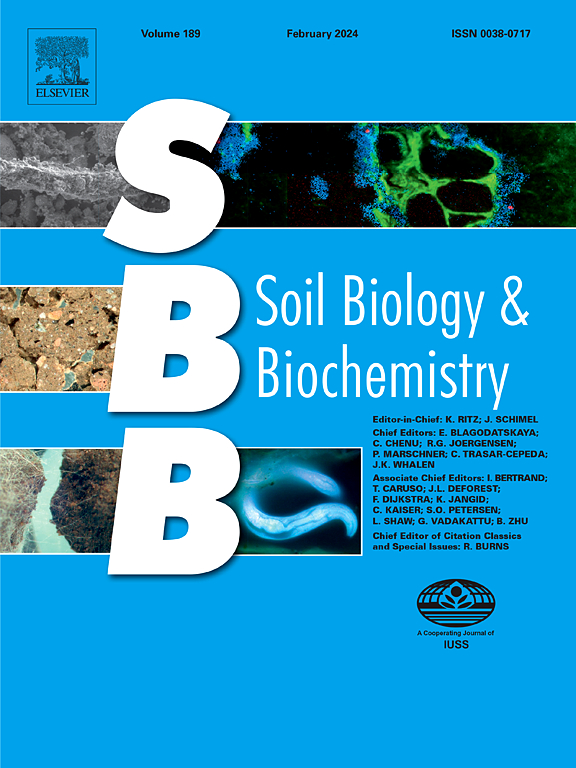Large underestimations of warming-induced soil carbon emissions from oversimplistic Q10 indicator
IF 9.8
1区 农林科学
Q1 SOIL SCIENCE
引用次数: 0
Abstract
The sensitivity of soil microbial respiration to climate warming is a major source of uncertainty in predicting soil carbon (C) emissions to the atmosphere and their feedback to climate change. One key issue is the persistent misuse of Q10, the factor by which respiration rate is multiplied for a 10oC increase in temperature, as an indicator of the temperature sensitivity. Despite ample empirical and theoretical evidence that Q10 is temperature-dependent, most publications on the topic continue to measure and conceptualise Q10 as being independent of temperature. Here, we analyse a published dataset of temperature incubations of soil microbial respiration across a global latitudinal gradient and project the resulting sensitivities onto global maps under four climate change scenarios. We reveal that omitting to account for the temperature dependence of Q10 leads to an underestimation of global soil C emissions from 2015 to 2100 ranging from 5.5 ± 2.4 PgC to 10.4 ± 6.9 PgC across different climate change scenarios. Moreover, beyond uncertainties in predictions of global soil C emissions, modelling inaccuracies are geographically skewed, with large underestimations at high latitudes (of up to 34 MgC ha-1) and overestimations in warmer regions (of up to 12 MgC ha-1). The disparate regional patterns have large implications for land stewardship, as management efforts could overlook soil C losses in vulnerable septentrional areas while unnecessary interventions could be recommended in tropical regions where soil C sequestration may not be as pressing.过度简化Q10指标对气候变暖引起的土壤碳排放的严重低估
土壤微生物呼吸对气候变暖的敏感性是预测土壤碳(C)向大气排放及其对气候变化反馈的主要不确定性来源。一个关键问题是Q10的持续滥用,Q10是温度升高10摄氏度时呼吸速率乘以的因子,作为温度敏感性的指标。尽管有大量的经验和理论证据表明辅酶Q10依赖于温度,但大多数关于该主题的出版物继续测量辅酶Q10并将其概念化为与温度无关。在这里,我们分析了已发表的全球纬度梯度土壤微生物呼吸温度孵化数据集,并将结果敏感性投影到四种气候变化情景下的全球地图上。我们发现,忽略Q10的温度依赖性导致低估了2015 - 2100年不同气候变化情景下全球土壤C排放量,其范围为5.5±2.4 PgC至10.4±6.9 PgC。此外,除了全球土壤碳排放预测的不确定性之外,模型的不准确性在地理上是倾斜的,高纬度地区大幅低估(高达34 MgC ha-1),而在较温暖地区高估(高达12 MgC ha-1)。不同的区域模式对土地管理有很大的影响,因为管理工作可能会忽视脆弱的森林地区的土壤C流失,而在土壤C封存可能不那么紧迫的热带地区,可能会建议采取不必要的干预措施。
本文章由计算机程序翻译,如有差异,请以英文原文为准。
求助全文
约1分钟内获得全文
求助全文
来源期刊

Soil Biology & Biochemistry
农林科学-土壤科学
CiteScore
16.90
自引率
9.30%
发文量
312
审稿时长
49 days
期刊介绍:
Soil Biology & Biochemistry publishes original research articles of international significance focusing on biological processes in soil and their applications to soil and environmental quality. Major topics include the ecology and biochemical processes of soil organisms, their effects on the environment, and interactions with plants. The journal also welcomes state-of-the-art reviews and discussions on contemporary research in soil biology and biochemistry.
 求助内容:
求助内容: 应助结果提醒方式:
应助结果提醒方式:


